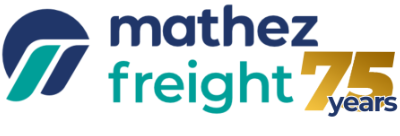
Quick Tips for Logistics Professionals
Quick Tips for Logistics Professionals
- The reform of Customs declarations is part of a new Customs information system, to be entirely dematerialized and interoperable at the Europeran Union (EU) level.
- The deployment of this Customs informations system called DELTA I/E in France should be completed by 2025. The introduction of the new import declarations (H1) originally scheduled for July 2023 has been postponed for now.
- The French customs document called “DAU” (Document Administratif Unique or Single Administrative Document, “SAD”) disappears in favor of electronic data sets. A PDF format is being developed.
- The new format provides for new data, which shippers will have to communicate to their logistics services or to their customs representative.
Origin & schedule of the customs declaration reform
For several months, the French Customs Authority (DGDDI) has been announcing the disappearance of the “DAU” or “SAD” (Single Administrative Document), well known to international trade actors, in favor of a new declaration format renamed H1 for imports and B1 for exports.
Objectives: Dematerialization and interoperability of Customs information systems
It is the Union Customs Code (UCC), which came into effect in May 2016, that is driving the changes in Customs procedures, as Article 6§1 provides for the dematerialization of exchanges between customs authorities and businesses.
The reform also aims to harmonize data exchanges between the different member states, to allow the implementation of inter-operational customs information systems between the member states of the European Union (EU), in anticipation of the deployment of Centralized Customs Clearance at European level (CCCC).
The objective is to allow the Spanish customs to talk with the French customs and vice versa, at the scale of the whole EU.
As a reminder, the CCCC (Centralized Community Customs Clearance) is the possibility to present goods in Genoa while filing the customs declaration with the customs of Marseille for example.
Stages of the reform of customs declarations (2021/2025)
In France, the first stage of this reform was implemented in July 2021 with the creation of DELTA H7, which is mainly used by express carriers for customs declarations for small shipments with a value of less than €150.
The next step is the creation of the new remote customs clearance service called DELTA Import-Export (I/E), announced for the second half of 2023, initially with a reduced scope of functionality for the filing of import declarations (H1), and then in 2024 for export declarations (B1).
The date of completion of the recast of all IT systems is set by the Union Customs Code at the latest by 31 December 2025.
- The DELTA IE project sheet.
DELTA IE / H1 deployment postponed
French Customs had previously announced the launch of an experimental phase of DELTA I/E on July 15, 2023, starting with the import part (H1). However, given the scale of the IT project, it was with some relief that we learned on April 17 that the implementation of the tool had been postponed for now. This gives operators some time to prepare for these changes, especially since other projects and new tools are currently being deployed: EORI SIREN, IC2, PTNS, etc.The new format of the French Customs declaration
The new format implies a change of form, but also new data.Disappearance of the classic “SAD” in favor of data sets
The historical structure of the customs declaration in the form of numbered headings and using the headings of each box of our current SAD is definitely abandoned. The future declaration will consist of a computerized dataset of data elements and sub-data elements that will be quite similar to the customs declarations issued in the UK (C88).A PDF format of the French customs declaration
It is planned that the H1 declaration will be completely dematerialized. However, a PDF printout will be possible, at the general request of the stakeholders. Operators are currently the subject of a broad consultation, involving their professional organizations and customs software publishers, in order to reach a consortium around the PDF format for customs declarations. Nothing is certain at this stage. Customs has already proposed a draft PDF for the customs declaration for its agents. The risk for operators would be to find themselves with PDF returns of customs declarations that are very different from one publisher to another, with data that is more or less easy to decipher.Structure of the new customs declaration
We are moving from a 54-box SAD, currently containing about 80 data, to a new customs declaration containing up to 120 data divided into several segments and themes:- 11 – Information on the message
- 12 – References of messages, certificates and authorizations
- 13 – Stakeholders
- 14 – Assessment/imposition information
- 15 – Dates/Times/Periods
- 16 – Places/Countries/Regions
- 17 – Customs offices
- 18 – Identification of goods
- 19 – Transportation information (modes, means and equipment)
- 99 – Other data elements (statistics, guarantees and tariff data).
New data to communicate to your Customs representative
French Customs will be requiring new data:- Indication of the transport document with which the goods entered the Customs Territory of the Union.
- Differentiation and identification of importers, exporters, sellers, and buyers
- The exporter’s data is now mandatory on import declarations.
- Differentiation and identification of the representative and the declarant on the declaration
- The indications related to the incoterms will have to be more detailed.



